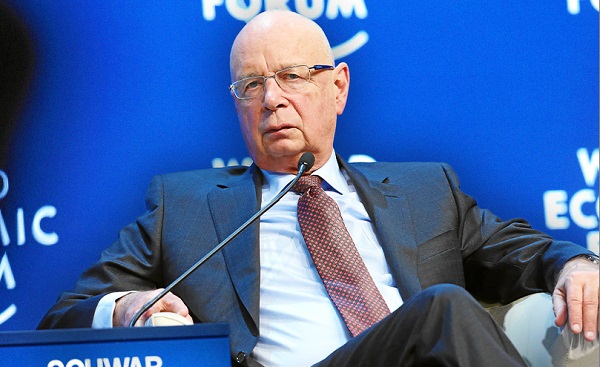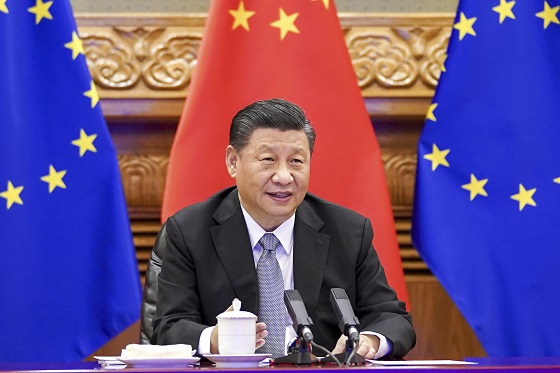Alberta
Provincial Government aggressively pursuing an upgrader for Alberta

From the Province of Alberta
Oil upgrading proposals worth billions
Premier Rachel Notley’s made-in-Alberta energy upgrading strategy is a step closer to creating thousands of jobs and attracting billions of dollars in private sector investment while keeping more value in the province.
Six project proposals are being considered for investment in partial upgrading of oil sands bitumen. These proposals are collectively worth nearly $5 billion of new private sector investment and could create almost 10,000 construction jobs with 500 more jobs during operations.
“For decades, Albertans have been talking about getting more for our oil by upgrading more here at home. We’re taking action to make that a reality. By supercharging energy upgrading in Alberta, we can create more jobs and open more markets to finally get top dollar for our resources.”
Partial upgrading is an emerging technology that reduces the thickness of oil sands bitumen so it can flow through pipelines more easily, without having to be blended with diluent. This provides significant cost savings to industry, increases pipeline capacity by up to 30 per cent, and provides access to more refineries around the world.
“We’re kick-starting a new era of energy diversification in Alberta. These strong proposals show companies want to make big investments and create opportunities in our province. Our made-in-Alberta energy upgrading strategy is a win for energy producers and a win for all Albertans.”
These opportunities were made possible through the Energy Diversification Act, introduced in March 2018. The government committed up to $1 billion in incentives to help leverage billions more in private investment to build partial upgrading facilities.
The government will review the short list of proposed projects for their economic viability and how they demonstrate the best possible value for Albertans while meeting the province’s world-leading plan to do the right thing for the environment. Discussions will begin with the companies in the coming weeks.
Background
Partial upgrading reduces the thickness of oil sands bitumen so it can flow through pipelines more easily, without having to be blended with diluent. This not only reduces significant industry costs for diluent but also increases the volume of bitumen that can be shipped through pipelines by up to 30 per cent, making Alberta’s industry more competitive and enabling more refineries to process Alberta’s bitumen products.
Partial upgrading is one of the initiatives supported through the Energy Diversification Act. The government will commit to $1 billion in incentives for partial upgrading over eight years beginning in 2019-20, which will include a variety of fiscal tools including loan guarantees and grants.
Premier Notley recently doubled support for petrochemical upgrading, which was also made possible under the act. Total investment will now reach $2.1 billion to help create as many as 15,500 jobs during construction of multiple petrochemical facilities across the province. Once operational, another 1,000 jobs could be created with private-sector investment expected to reach $20.6 billion.
The made-in-Alberta energy upgrading strategy builds on the government’s earlier work to create jobs, develop new markets and add more value to Alberta’s resources within the province.
Alberta
Made in Alberta! Province makes it easier to support local products with Buy Local program

Show your Alberta side. Buy Local. |
When the going gets tough, Albertans stick together. That’s why Alberta’s government is launching a new campaign to benefit hard-working Albertans.
Global uncertainty is threatening the livelihoods of hard-working Alberta farmers, ranchers, processors and their families. The ‘Buy Local’ campaign, recently launched by Alberta’s government, encourages consumers to eat, drink and buy local to show our unified support for the province’s agriculture and food industry.
The government’s ‘Buy Local’ campaign encourages consumers to buy products from Alberta’s hard-working farmers, ranchers and food processors that produce safe, nutritious food for Albertans, Canadians and the world.
“It’s time to let these hard-working Albertans know we have their back. Now, more than ever, we need to shop local and buy made-in-Alberta products. The next time you are grocery shopping or go out for dinner or a drink with your friends or family, support local to demonstrate your Alberta pride. We are pleased tariffs don’t impact the ag industry right now and will keep advocating for our ag industry.”
Alberta’s government supports consumer choice. We are providing tools to help folks easily identify Alberta- and Canadian-made foods and products. Choosing local products keeps Albertans’ hard-earned dollars in our province. Whether it is farm-fresh vegetables, potatoes, honey, craft beer, frozen food or our world-renowned beef, Alberta has an abundance of fresh foods produced right on our doorstep.
Quick facts
- This summer, Albertans can support local at more than 150 farmers’ markets across the province and meet the folks who make, bake and grow our food.
- In March 2023, the Alberta government launched the ‘Made in Alberta’ voluntary food and beverage labelling program to support local agriculture and food sectors.
- Through direct connections with processors, the program has created the momentum to continue expanding consumer awareness about the ‘Made in Alberta’ label to help shoppers quickly identify foods and beverages produced in our province.
- Made in Alberta product catalogue website
Related information
Alberta
Province to expand services provided by Alberta Sheriffs: New policing option for municipalities

Expanding municipal police service options |
Proposed amendments would help ensure Alberta’s evolving public safety needs are met while also giving municipalities more options for local policing.
As first announced with the introduction of the Public Safety Statutes Amendment Act, 2024, Alberta’s government is considering creating a new independent agency police service to assume the police-like duties currently performed by Alberta Sheriffs. If passed, Bill 49 would lay additional groundwork for the new police service.
Proposed amendments to the Police Act recognize the unique challenges faced by different communities and seek to empower local governments to adopt strategies that effectively respond to their specific safety concerns, enhancing overall public safety across the province.
If passed, Bill 49 would specify that the new agency would be a Crown corporation with an independent board of directors to oversee its day-to-day operations. The new agency would be operationally independent from the government, consistent with all police services in Alberta. Unlike the Alberta Sheriffs, officers in the new police service would be directly employed by the police service rather than by the government.
“With this bill, we are taking the necessary steps to address the unique public safety concerns in communities across Alberta. As we work towards creating an independent agency police service, we are providing an essential component of Alberta’s police framework for years to come. Our aim is for the new agency is to ensure that Albertans are safe in their communities and receive the best possible service when they need it most.”
Additional amendments would allow municipalities to select the new agency as their local police service once it becomes fully operational and the necessary standards, capacity and frameworks are in place. Alberta’s government is committed to ensuring the new agency works collaboratively with all police services to meet the province’s evolving public safety needs and improve law enforcement response times, particularly in rural communities. While the RCMP would remain the official provincial police service, municipalities would have a new option for their local policing needs.
Once established, the agency would strengthen Alberta’s existing policing model and complement the province’s current police services, which include the RCMP, Indigenous police services and municipal police. It would help fill gaps and ensure law enforcement resources are deployed efficiently across the province.
Related information
-

 2025 Federal Election2 days ago
2025 Federal Election2 days agoBREAKING: THE FEDERAL BRIEF THAT SHOULD SINK CARNEY
-

 John Stossel2 days ago
John Stossel2 days agoClimate Change Myths Part 2: Wildfires, Drought, Rising Sea Level, and Coral Reefs
-

 2025 Federal Election2 days ago
2025 Federal Election2 days agoCHINESE ELECTION THREAT WARNING: Conservative Candidate Joe Tay Paused Public Campaign
-

 Media2 days ago
Media2 days agoCBC retracts false claims about residential schools after accusing Rebel News of ‘misinformation’
-

 Business2 days ago
Business2 days ago‘Great Reset’ champion Klaus Schwab resigns from WEF
-

 Bjorn Lomborg2 days ago
Bjorn Lomborg2 days agoNet zero’s cost-benefit ratio is CRAZY high
-

 International2 days ago
International2 days agoPope Francis’ funeral to take place Saturday
-

 Business16 hours ago
Business16 hours agoTrump: China’s tariffs to “come down substantially” after negotiations with Xi



